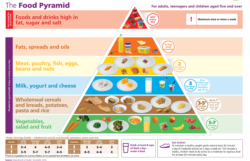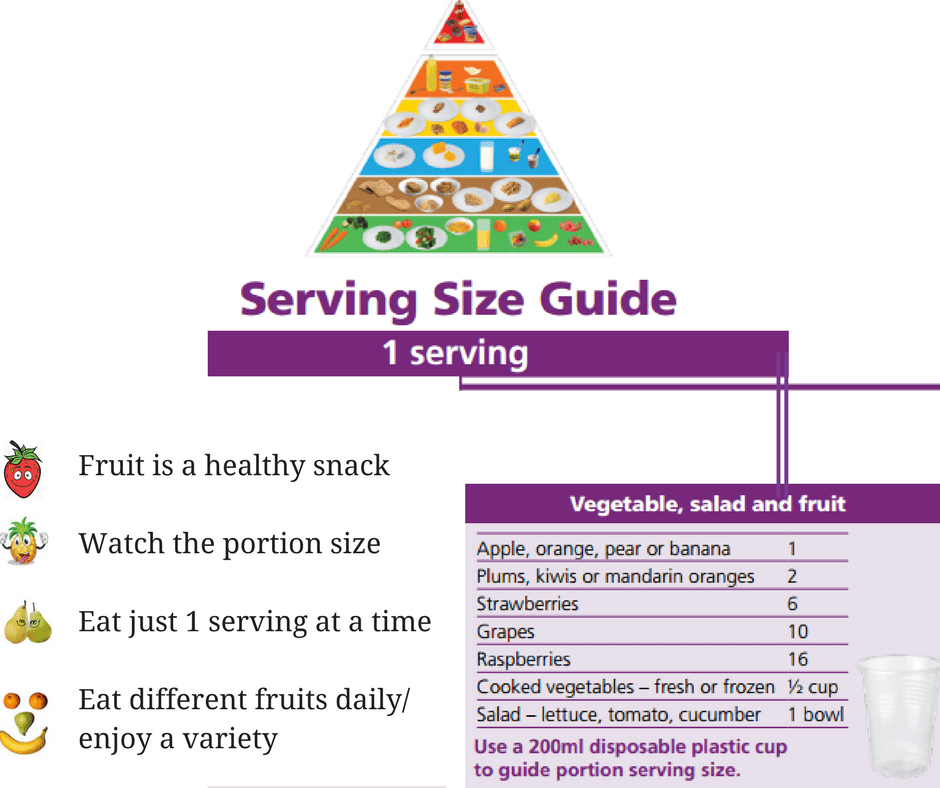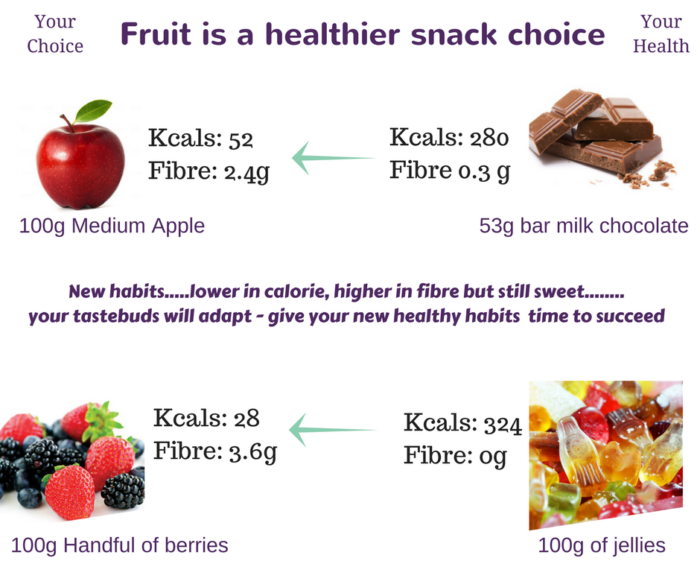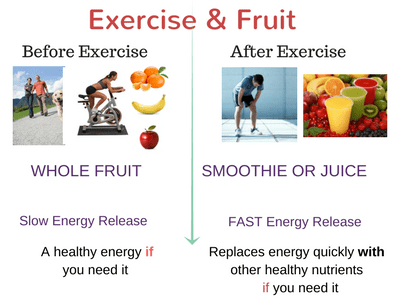In December 2016 the Department of Health launched a new food pyramid where one of the biggest changes was that fruit and vegetables were moved to the bottom shelf of the pyramid and became the largest part of our diet to help maintain good health.
![]() Tip: To lose weight, fill up on salad and vegetables at each meal and enjoy 1 portion of fruit as dessert.
Tip: To lose weight, fill up on salad and vegetables at each meal and enjoy 1 portion of fruit as dessert.
What is a serving?
Figure 1
![]()
Tip: Eat a mixture of fruits everyday/week to ensure you get a variety of nutrients
Why eat Fruit as a snack?
- lower in calories than most other snacks
- higher in fibre which aids digestion and is filling to support weight-loss
- gives us many of our essential minerals and vitamins
- always a healthier snack choice than crisps, cake, sweets etc
- Dried fruit is a more condensed natural sugar so be careful with quantities – no more than a dessert-spoon as a serving
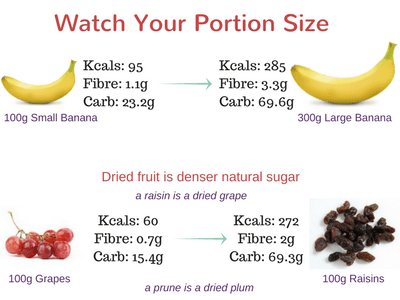
![]()
Tip: Drink your 150ml juice or smoothie with meals rather than in between meals. Juices and smoothies can raise glucose more quickly than whole fruit i.e. not juiced
Tip: Freeze grapes as a snack and imagine they are a hard-boiled sweet – every little tip helps as you come off sugar…….
I have Diabetes, is it OK to eat fruit ?
 “All fruit is ok to have when you have diabetes and yes it contains sugar in the form of fructose but because fruit also contains two types of fibre, the naturally occurring sugars are released into our blood stream slowly. So if we have a small serving of fruit (note serving sizes above in figure 1), the effect on our blood glucose is small. Fruit is always a better snack choice than for example crisps, cake or confectionary” says Sinead Powell, Dietitian with Diabetes Ireland
“All fruit is ok to have when you have diabetes and yes it contains sugar in the form of fructose but because fruit also contains two types of fibre, the naturally occurring sugars are released into our blood stream slowly. So if we have a small serving of fruit (note serving sizes above in figure 1), the effect on our blood glucose is small. Fruit is always a better snack choice than for example crisps, cake or confectionary” says Sinead Powell, Dietitian with Diabetes Ireland
When it comes to understanding diabetes it is important to know what foods can affect glucose levels. All foods containing carbohydrates will affect glucose so it’s important to be clear on where these come from and how to balance serving size with activity and weight.
Fruit can be good to have before you exercise as most fruits are easily digested delivering energy slowly due to their medium glycaemic index. If you need to replace calories and glucose quickly after a strenuous or long exercise session, take a glass of fruit juice as this has a high glycaemic index, delivering glucose quickly to the bloodstream.
If you are overweight and exercising to reduce weight, fruit is a good way to replace energy with less calories rather than chocolate, confectionery or junk food.

Tip: Buy the small pots of fruit chunks (100g) and avoid the larger pots (350g) which can be easily eaten in one sitting (350g = 4 portions)
“Fruit juice or smoothies shouldn’t be more than 150mls and should be taken with meals rather than in between meals as they can raise glucose much more quickly than when the fruit is eaten whole.
150ml = 3/4 of the plastic cup seem in figure 1 above above. These little cups are often used with water coolers.
Smoothies and fruit juices make it easy to add fruit and vegetables to your day. But, compared with whole fruits, salads and vegetables, they are lower in fibre and often contain added sugars from juice drinks, juice concentrate, honey and syrups.
No matter how many juices you have in one day, only one serving can count in your recommended 5 to 7 servings for a healthy diet.
![]() Tip: Dilute your juice with water or ice to fool your eyes into believing that you are having a big glass. Add ice.
Tip: Dilute your juice with water or ice to fool your eyes into believing that you are having a big glass. Add ice.
Coming Soon………..
Our next feature is all about Becoming NUMBERS SMART if you have diabetes. Stay posted.



